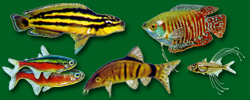- О проекте
- Фотогалерея
- Аквариумные беспозвоночные
- Аквариумные растения
- Аквариумные рыбы
- Альбомы посетителей сайта
- Рептилии и амфибии
- Выставки, встречи, конкурсы
- Магазины, разводни, домашние хозяйства
- Клуб аквариумистов "Хемихромис", г. Петрозаводск
- хозяйство Владимира Челнокова
- Аквариумы Кузьмичева Кирилла
- Дискусоразводня “С.К.А.Т.” С.И.Горюшкина
- Зоомагазин «Бетховен» г.Армавир
- аквариум Лики Аверкиевой
- аквариум Юли из Жаворонок
- аквариум Яны И.
- дома у Михаила Волкова
- зоомагазин Зеленая игуана
- карантинная база Андрея Чурилова
- коллекция Евгения Цигельницкого
- коллекция Константина Шидловского
- разводня Александра Березина
- разводня Владимира Сторожева
- рыборазводня АкваЭкзотика из Лыткарино
- хозяйство Алексея Бринева
- Разные комбинации ламп Hagen
- Сингапурский каталог растений
- надо разбирать
- Библиотека
- Форум
- Правила сайта
- Поиск
Homemade Food for Fish
Еще одна статья про самодельный фарш для рыб. На английском языке.
Homemade Food for Fish
BY JENNIFER LEWITT
| A picky individual benefits when its caretaker feeds it a homemade "meal." | 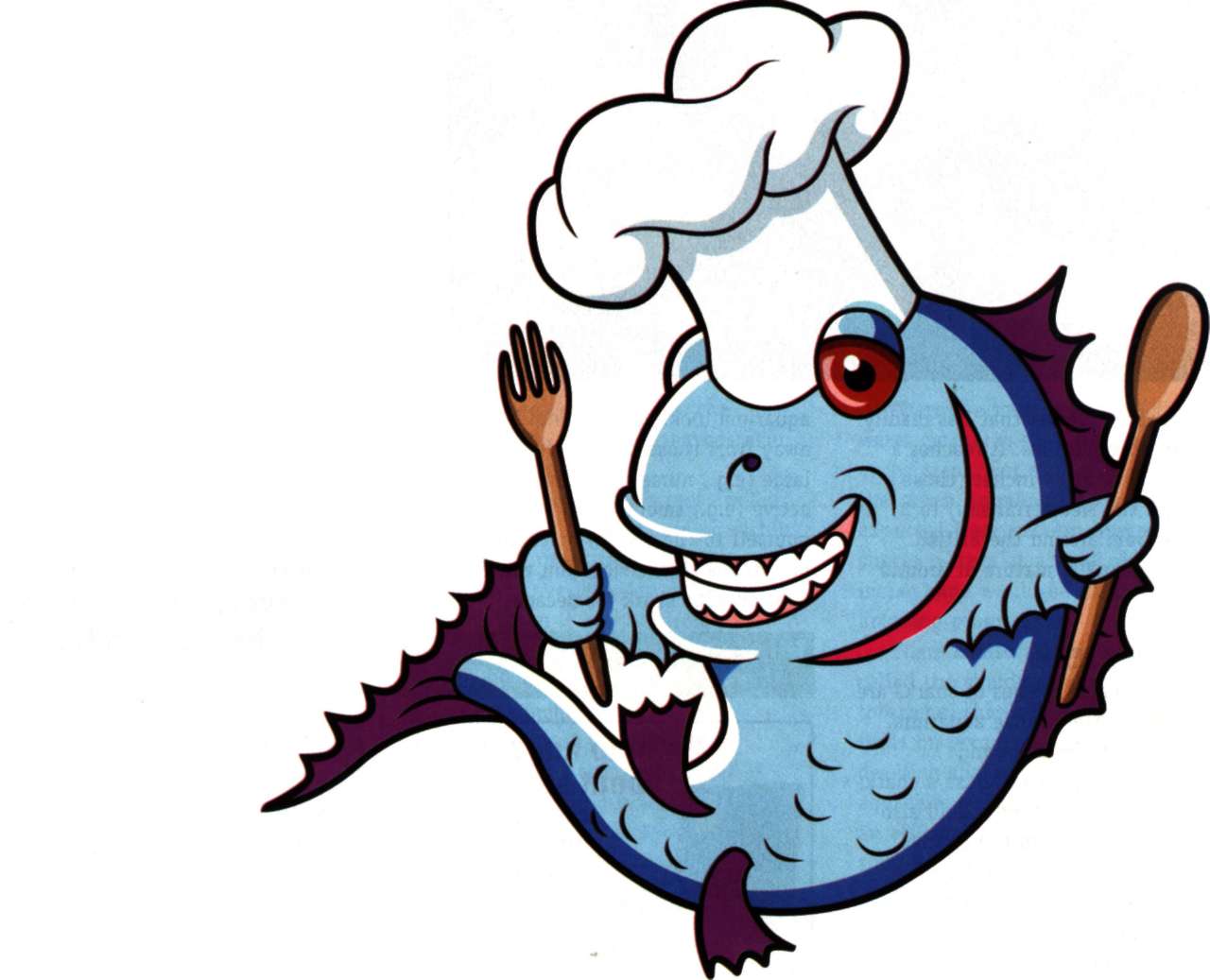 |
| When I was a relative newbie in the world of saltwater husbandry, I was dazzled by the vast array of frozen fish foods. Sometimes, I bought quite a number of packages at scandalous prices. There was one problem, however: Some of my fish wouldn't eat anything from those tidy frozen boxes, nor would they touch dry foods. Although a lot of these foods are great quality and accepted by the majority of fish, we have all heard of those hard-to-feed individuals. |
I was puzzled, and I feared my fish were sick or just terminally picky. After all, I had done my research before buying my fish. Porcupine puffers (Diodon sp.) should eat mussels, shrimp, squid and clams, right? Sure they do, but mine wouldn't touch anything already prepared from the store.
I had an epiphany when I was thawing some mussel cubes. They looked nothing like the mussels I make with pasta. So, I went to the grocery store and bought five or six live mussels from the seafood counter and took them home to experiment. I was naturally quite cautious. I put the live mussels into clean saltwater made up with marine salt mix and let them sit overnight. All were still alive the next day, so I plunged ahead.
My porcupine puffer needed to eat something — anything. I cut open a mussel, cut up the insides with a sharp knife and nervously fed just a pinch to my picky puffer. It gobbled it right up and swam back and forth looking for more.
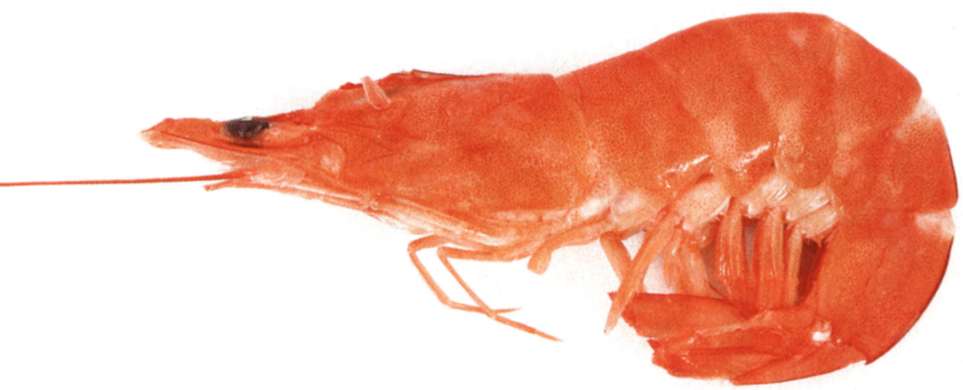 |
| If using shrimp in your homemade food recipe, try to get them with the shells still on. |
I went back to the seafood counter and got a single raw, shell-on tiger shrimp, a live littleneck clam and a quarter pound of raw squid. The puffers greeted the new food with great enthusiasm when fed a pinch at a time.
Don't know what to buy? Look up your fish or invertebrate species in a reliable reference book to determine their natural diets. Then buy the fresh or frozen foods in those groups.
• Crustaceans. Shrimp, crab, crayfish, lobster and prawns. Keep the shells on.
• Mollusks. Snails, clams, oysters, mussels, cockles, scallops, (all of which, when bought, should be tightly closed — a sign that they are still alive) as well as
squid and octopus.
• Fish. Filets of nonoily marine fish such as cod, haddock, pollack, halibut, red snapper and so on.
• Vegetation. Dulse flakes, nori (sushi seaweed), kelp, laver, sea lettuce, alaria, Spirulina powder. These can be purchased online, at a local health food store or at an Asian market.
• Miscellaneous. Sea urchin roe.
But what about the vitamins and minerals in prepared foods? Get a good grade of marine fish vitamin and HUFA (highly unsaturated fatty acid) supplement, such as a combination of Selcon or Zoecon and Zoe supplements, and add them at the manufacturer's recommended rate to the food you make.
 |
| Scoop out the flesh from oysters, as well as clams, mussels and snails, before use. |
You may think that the little cubes are so convenient, so you won't bother making your own food. This is certainly understandable, but if you're so-inclined, you can make your own cubes with a few mini ice cube trays. Shuck and scoop the flesh out of any clams, mussels, snails, cockles or oysters you will be using. Chop up a selection of mixed food items representative of each species' diet using a food processor, blender or simply a good, sharp knife. I prefer a food processor for speed and ease of cleaning.
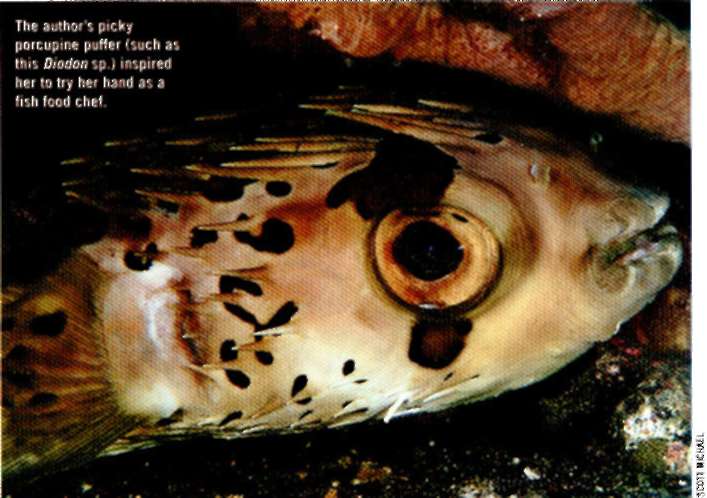
"Some fish, such as puffers, need to wear their teeth down. ... WhoIe or shell-on foods....will do this nicely."
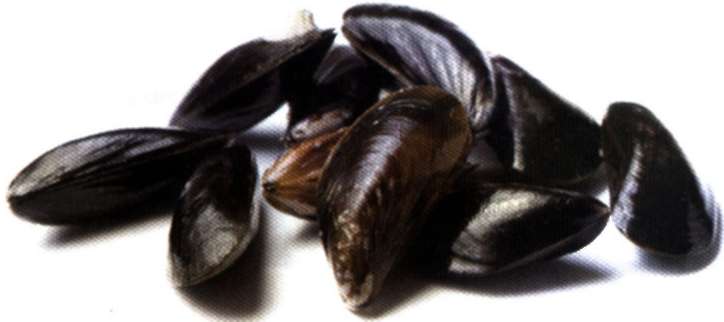 |
| Mussels were the first food that the author exparimented with when deciding to attempt preparing food for her fish. |
Press plastic wrap down onto the top of the "ice cubes," then wrap the tray in plastic wrap. Freeze until rock hard, take the cubes out of the tray and seal small portions into freezer bags. Store these in the coldest part of your freezer. When you want to feed your fish, simply pull out a cube and defrost just like you would a commercially made cube.
Even though it isn't necessary, you can create a cube that retains its shape after thawing. Add agar agar (an algae-based gelling agent) to the mix. Agar agar can be found at Asian grocery stores, health food stores and on the Internet. Most brands will have mixing instructions on the package.
| A Few Important Points • Use your nose. Seafood should smell like the sea — salty and a bit earthy. Don't buy it if it has a strong fishy odor, or smells like ammonia or chlorine. • Always buy raw food. It is more nutritious for your fish. You can tell by color if a crustacean has been cooked or is still raw. Crustaceans turn red or pink when cooked. • Include the whole food organism in your mix if possible: heads, shells, legs — the works. Use everything except for the shells on clams, snails, mussels and cockles, and the bones in fish. • If you buy packaged seafood, make sure there are no preservatives or artificial colorings added. The package will usually list them if any are included. • Never feed your fish anything that isn't fresh or human-grade. If you wouldn't eat it, they shouldn't. • Process and freeze seafood right away, and observe the same safe food procedures you use for people food. • Be very careful to avoid getting cleaner residue from utensils, trays or cutting boards into the food. Always rinse tools thoroughly before use. |
Some fish, such as puffers, need to wear their teeth down. Much like rodents, some fish's teeth continue to grow throughout their lives. Whole or shell-on foods, such as mussels, clams, snails, crabs and shrimp, will do this nicely. Snails, mussels, cockles and clams can be cracked open just a bit by wrapping them in a towel and hitting lightly with a hammer, rolling pin or a can of food from your cupboard. Shrimp and crabs can be cut into crunchy single-serving portions with a sharp serrated knife or kitchen shears. These crunchy foods can also be frozen into vitamin water in ice cube trays to store nicely in the freezer.
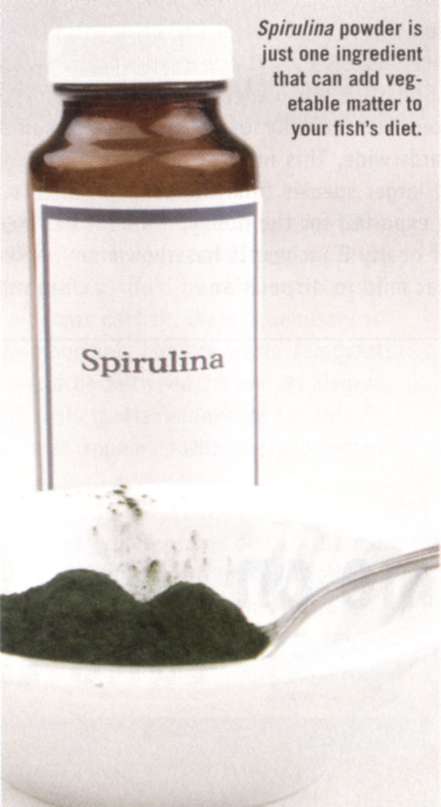
| Garlic UseSome people believe that garlic enhances a fish's immune system and prevents parasitic infections. If you'd like to use it in your food, mince it very fine, or puree and use sparingly. |
»
- 6727 просмотров
